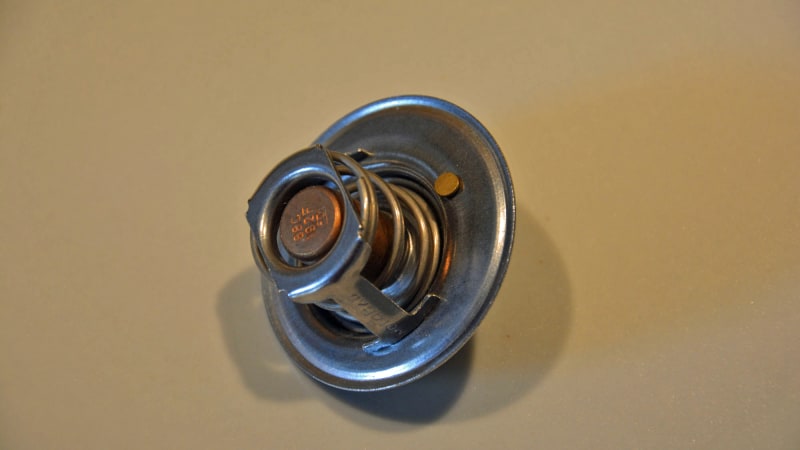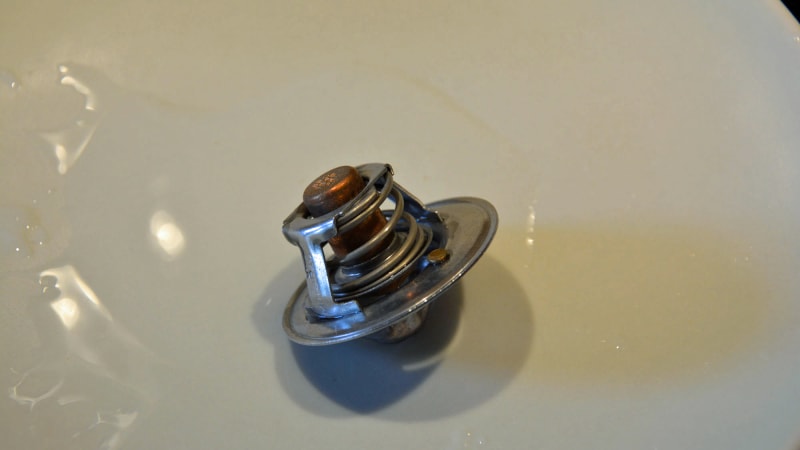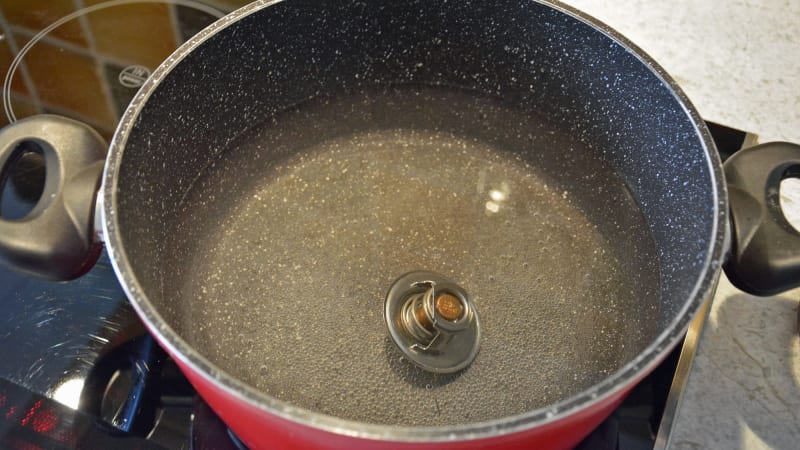The thermostat is a crucial part of your car’s cooling system because it plays a significant role in regulating the engine’s temperature. It controls the flow of coolant between the engine and the radiator. If the engine is cold, the thermostat stays closed to let it warm up. As the engine heats up, the thermostat gradually opens to allow coolant to reach the radiator. It’s a relatively simple part, but it’s also a wear-and-tear item that needs to be replaced periodically. Here are some of the symptoms to keep an eye out for if you think your thermostat is failing.
Overheating (or overcooling)
First, note that air-cooled cars are not equipped with a thermostat; at least not one like we’re describing in this story. Air-cooled engines are few and far between these days, however, so there’s a strong chance that this guide applies to your car. With that said, overheating is the most common symptom of a bad or a failing thermostat. This happens because a thermostat can get stuck as it ages. If it’s stuck in the closed position, it won’t let the coolant reach the radiator and the engine will overheat. In turn, this can cause major and expensive damage.
One of the lesser-known symptoms of a bad thermostat is overcooling. As the name implies, that’s the opposite of overheating: the engine never reaches operating temperature. This happens when a thermostat gets stuck open. Overcooling causes its fair share of issues as well.
Keep an eye on your temperature gauge. If you don’t have one, monitor the various warning lights in the instrument cluster. It’s never a good idea to continue driving if your car is overheating, so stop the engine as soon as it’s safe to do so if you notice (or smell) that the temperature is rising to a dangerous level. If the engine is merely running hot, try turning the heater on full blast to dissipate some of the excess heat. You’ll be hot, and this won’t fix your thermostat by any means, but it might help you get to your destination without a costly towing bill.
Most of the woes caused by overcooling are longer-term ones; it’s a problem that can reduce your engine’s life, for example. While we don’t recommend driving a car with an overcooling problem for hundreds of miles, it’s not usually an issue that requires immediate attention.
Coolant leak
Another tell-tale sign of a thermostat-related problem is a coolant leak. It’s not the thermostat itself that leaks; it contains no coolant. Instead, the source of the leak is often the gasket that prevents coolant from seeping out of the thermostat housing as it flows between the engine and the radiator. Like all gaskets it gets dry and brittle with age and no longer does its job. Keep in mind coolant can leak from dozens of parts. If you spot coolant under your car, don’t automatically assume it’s coming from the thermostat housing. Look around the housing for signs of a leak, like drops of coolant, drip marks, and deposits. If you don’t see anything unusual, the leak is likely coming from another part.
How to change or test a thermostat
Testing (and, if needed, changing) a thermostat is not difficult, but there are several important precautions to take. First, never crack open your car’s cooling system if the engine is hot; that’s a good way of getting scarred for life. Second, as mentioned above, the housing is sealed by a gasket, which we strongly recommend you don’t re-use — it may not even come out in one piece. Order the correct gasket (and check if it needs sealant as well), wait for the engine to cool down, keep rags handy, and this shouldn’t take more than a few minutes of your time.
On most cars, the thermostat is located near the top of the engine. That’s not always the case: if you drive a Subaru, you may need to crawl under the car to access it. After placing a pan underneath where you’ll be working, remove the hose going to the thermostat housing, loosen the bolts that secure the top part of the housing, take it off (and use a rag to wipe off any coolant that drips), and you’ll see the thermostat. Remove it and carefully scrape off any gasket residue left. If you know that the thermostat is bad, pop the new one back in (make sure it’s in the right direction), fit the new gasket, tighten the bolts, re-install the hose, and you’re good to go. If you’re not sure, head to the kitchen.
If you know how to make pasta, you know how to test a thermostat — just don’t add salt. The main difference is that, when you’re cooking fettuccine you add the pasta after the water starts to boil. When you’re testing a thermostat, you’ll want to drop it in a pan of cold water and then bring it to a boil. We’re assuming that your thermostat is cold and therefore in the closed position; if it’s cold and it’s open you’ve found your problem. Place it in a pan full of water, wait until it boils, and use a ladle to fish it out. It should be in the open position; if it’s not, it’s stuck closed. Wash the pan thoroughly after testing a thermostat, otherwise your next arrabbiata sauce is going to taste a little funky.
Source: www.autoblog.com



